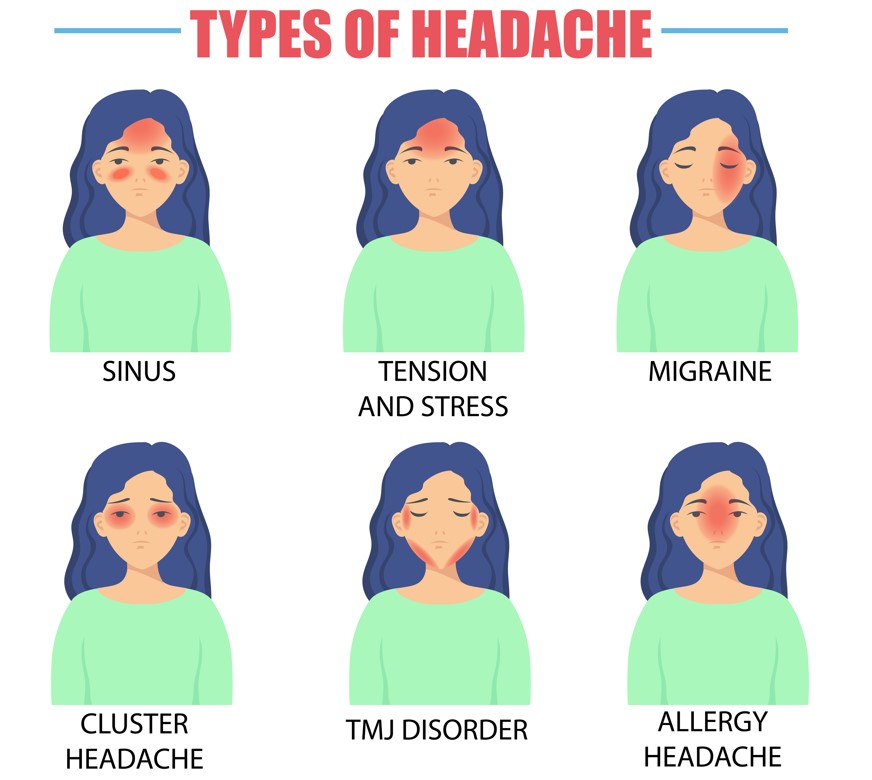Headaches are one of the most common health complaints, whether it’s the throbbing pain of a migraine, the constant pressure of a tension headache, or the excruciating discomfort of a cluster headache, these conditions can significantly impact daily life and overall well-being.
While medication is often the go-to solution for managing headaches, many individuals seek alternative or complementary approaches to alleviate their discomfort. Physiotherapy, a holistic and natural treatment modality, has gained increasing recognition as an effective means of addressing headaches and their underlying causes.
Headaches can stem from various factors, including muscle tension, poor posture, stress, and even underlying musculoskeletal issues. Physiotherapists are trained to assess and treat these contributing factors, providing a comprehensive approach to headache management. By addressing the root causes rather than merely treating the symptoms, physiotherapy offers a unique opportunity for long-term relief and improved quality of life.
Headache Types, Symptoms, and Causes

- Tension Headaches
- Symptoms: Dull, non-pulsating pain, tightness or pressure around the head
- Possible Causes: Muscle tension, poor posture, stress, eye strain, lack of sleep
- Location: Generalized pain across the head or at the back of the head/neck
- Migraines
- Symptoms: Severe, throbbing, pulsating pain, nausea, vomiting, sensitivity to light and sound
- Possible Causes: Hormonal changes, stress, certain foods (aged cheeses, chocolate, alcohol), lack of sleep, changes in weather
- Location: One side of the head or both sides
- Cluster Headaches
- Symptoms: Intense, sharp, burning pain around one eye or temple, restlessness, nasal congestion
- Possible Causes: Changes in circadian rhythms, hormone levels, smoking, alcohol consumption
- Location: One side of the head, often behind or around one eye
- Cervicogenic Headaches
- Symptoms: Pain starting in the neck and spreading to the head, often on one side
- Possible Causes: Neck muscle tension, poor posture, injury or disorders of the cervical spine
- Location: Starts in the neck and radiates to the back of the head or behind the eyes
- Sinus Headaches
- Symptoms: Deep, constant pain in the cheekbones, forehead, or bridge of the nose, often with nasal congestion
- Possible Causes: Sinus infections, allergies, structural abnormalities in the nasal passages
- Location: Across the forehead, cheeks, and around the eyes
The Role of Physiotherapy in Headache Management
Physiotherapy offers a holistic and natural approach to addressing headaches by targeting the underlying causes and triggers. Unlike medication that primarily treats symptoms, physiotherapy aims to identify and alleviate the root factors contributing to headache episodes.
- Identifying and Addressing Musculoskeletal Imbalances
- Physiotherapists conduct comprehensive assessments to evaluate posture, muscle tightness, joint mobility, and potential spinal misalignments.
- Manual therapy techniques like massage, myofascial release, and joint mobilization can help relieve muscle tension, improve flexibility, and restore proper joint function.
- Specific exercises and stretches are prescribed to strengthen weak muscles, improve posture, and correct imbalances that may be contributing to headaches.
- Managing Stress and Promoting Relaxation
- Stress is a significant trigger for many types of headaches, including tension headaches and migraines.
- Physiotherapists incorporate relaxation techniques such as deep breathing exercises, progressive muscle relaxation, and mindfulness-based strategies to help reduce stress levels and promote overall well-being.
- Lifestyle modifications, such as improved sleep hygiene and stress management techniques, can be recommended to prevent stress-induced headache episodes.
- Ergonomic Assessments and Workplace Modifications
- Poor ergonomics at work or home can lead to muscle strain, poor posture, and increased tension, all of which can contribute to headaches.
- Physiotherapists evaluate workstations, computer setups, and daily activities to identify potential risk factors and recommend appropriate modifications or adjustments.
- This can include recommendations for proper seating, positioning of computer monitors, and incorporating regular breaks or stretching routines.
- Education and Self-Management Strategies
- Physiotherapists provide valuable education on headache triggers, lifestyle factors, and self-management techniques.
- Patients learn to identify their individual triggers and develop strategies to avoid or manage them effectively.
- This empowers individuals to take an active role in their headache management and promotes long-term self-care.
Find the Right Physiotherapist Near You
One of the key advantages of physiotherapy is its personalized approach. By conducting thorough assessments and tailoring treatment plans to individual needs, physiotherapists can identify and address the specific factors contributing to each patient’s headaches, whether it’s muscle imbalances, stress, or ergonomic issues.
If you’re struggling with recurring headaches or seeking a more holistic approach to management, consider having physiotherapy near you, our 2 conveniently located physio clinic in Milton and Pickering, Ontario. By working closely with our qualified physiotherapists, you can embark on a journey towards lasting relief and regain control over your well-being, free from the debilitating effects of headaches.
Don’t let headaches continue to dictate your life. Take the first step towards a natural and comprehensive solution by consulting with a physiotherapist and discovering the potential benefits this powerful approach has to offer.
References:
Jull, G. A., Trott, P., Potter, H., Zito, G., Niere, K., Shirley, D., … & Richardson, C. (2002). A randomized controlled trial of exercise and manipulative therapy for cervicogenic headache. Spine, 27(17), 1835-1843.
Physiopedia. (2022). Physiotherapy for Headaches and Migraines. Retrieved from https://www.physio-pedia.com/Physiotherapy_for_Headaches_and_Migraines
Tension Headache: A Manual and Exercise Approach. (2019). American Physical Therapy Association. Retrieved from https://www.apta.org/patient-care/evidence-based-practice-resources/case-studies/tension-headache
